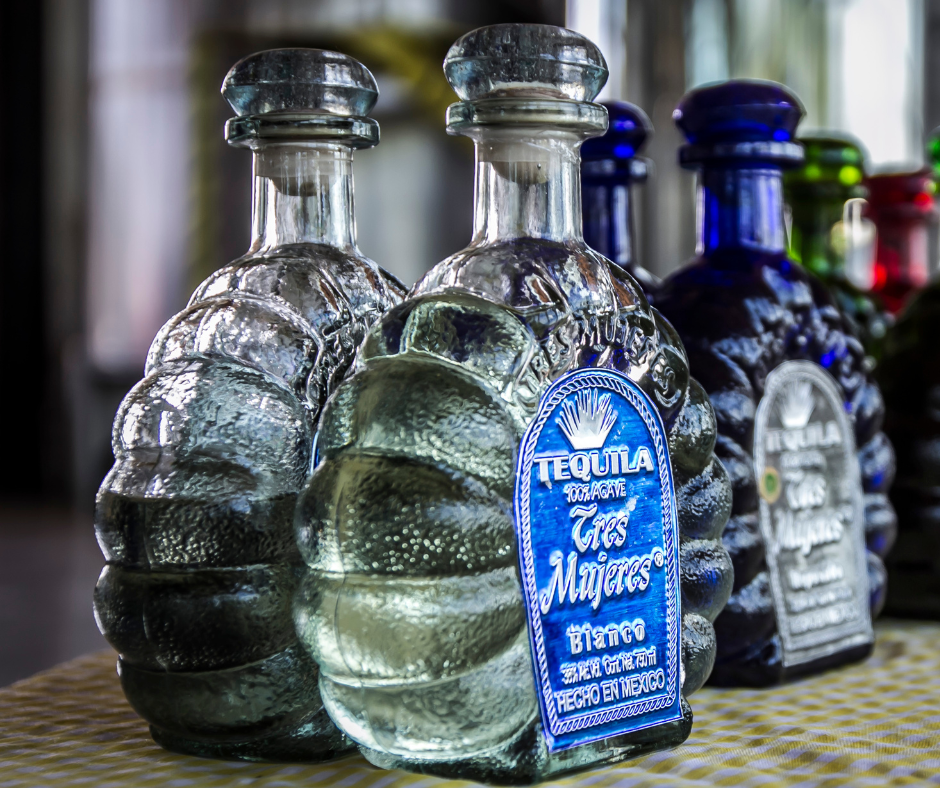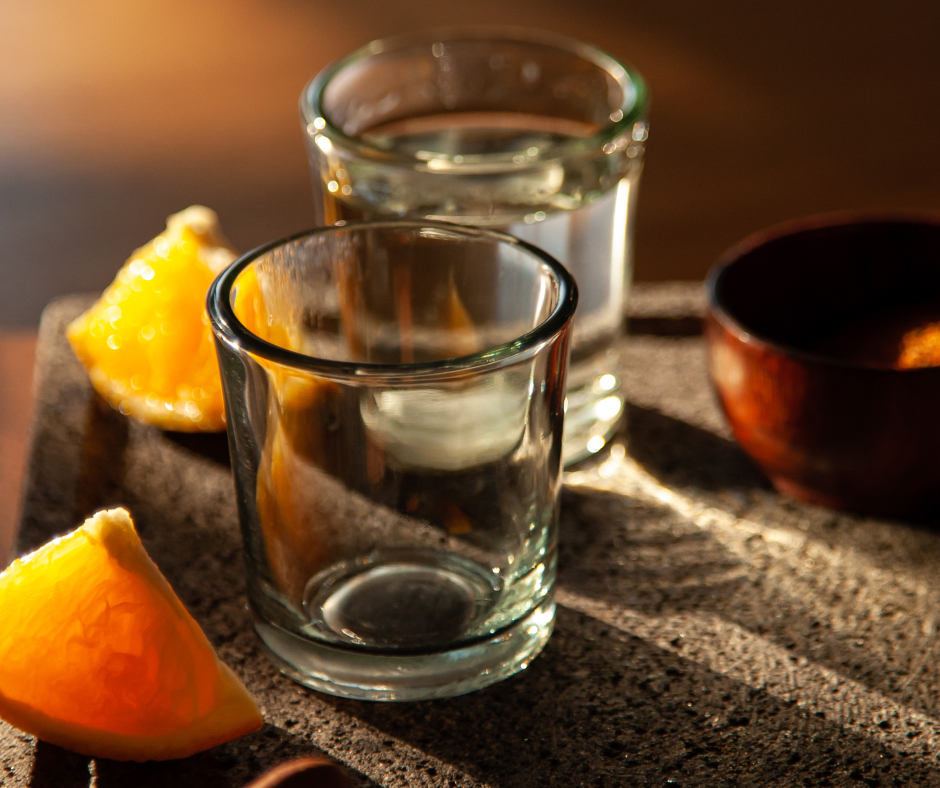Introduction
Tequila, often associated with vibrant fiestas and margarita-filled celebrations, is a spirit that intrigues many with its complex flavors. So, What Does Tequila Taste Like? From the moment the agave plant is harvested to the glass, Tequila undergoes a meticulous production process that brings out a range of tastes and aromas. In this blog post, we will explore Tequila’s diverse and nuanced flavors, diving into the depths of its complexity that make it a beloved spirit worldwide.
Overview Of The Blog Post Topic And The Complexity Of Tequila Flavors
Tequila is not just a simple alcoholic beverage; it is an art form that captures the essence of Mexico’s agave fields. The flavor profile of tequila results from various factors, including the type of agave used, the region it is grown in, the distillation process, and the aging techniques employed.
Let’s begin with the most essential ingredient: the agave plant. The blue agave, the traditional choice for tequila production, imparts a distinct sweetness and earthy character to the spirit. Different agave varieties, such as the lesser-known Espadín or Tobalá, can offer unique flavors, ranging from floral and fruity to smoky and herbal.
Next comes the production process. Tequila can be classified into two main types: 100% agave tequila and mixto tequila. The former is made solely from agave sugars, while the latter contains a minimum of 51% agave sugars, with the remaining portion made up of other sugars, typically derived from cane.
The juice is extracted and fermented once the agave is harvested and cooked. This stage allows the yeast to work magic, transforming the sugars into alcohol. The choice of yeast strain plays a vital role in shaping the final flavor profile, offering a range of fruity, spicy, or funky notes.
Distillation is another critical step in tequila production. The spirit is distilled in copper pot stills or sometimes in more modern column stills. Copper pot stills produce a richer, fuller-bodied tequila, while column stills produce a lighter and smoother character.
After distillation, some tequilas undergo an aging process. Blanco tequila, also known as silver or white Tequila, is typically unaged and offers a crisp and vibrant flavor profile, showcasing the pure essence of the agave. Reposado tequilas are aged between two and twelve months in oak barrels, imparting a mellow complexity with hints of vanilla and caramel. Añejo tequilas, aged for at least one year, develop deeper and more pronounced flavors, including oak, chocolate, and dried fruit.
In conclusion, tequila flavors are as diverse as the landscapes from which the agave is cultivated. From the floral nuances of the agave plant to the sweet vanilla notes of añejo tequila, this spirit’s complexities make it truly exceptional. So, the next time you take a sip of Tequila, savor the journey from agave to glass and let the flavors transport you to the heart of Mexico’s tequila-producing regions.

The Importance Of Agave In Tequila Flavor
Agave Is The Main Flavor Component Of Tequila
Tequila, renowned for its complex and diverse flavors, owes much of its taste profile to the agave plant. Considered the main flavor component, agave brings a distinct sweetness and earthiness to the spirit. Each type offers unique flavors, from the traditional blue agave to lesser-known varieties like agave Espadín or Tobalá.
Exploring The Unique Taste Of Agave In Tequila
The flavor of agave can vary based on factors such as the region it is grown in, the terroir, and the age of the plant. Agave cultivated in different regions, such as Jalisco, Guanajuato, or Michoacán, can exhibit specific flavor profiles. For example, agave grown in the highlands tends to produce sweeter and fruitier tequilas, while those from the lowlands can be more herbaceous and earthy.
Furthermore, the age of the agave plant also plays a role in the flavors it imparts. Young agave plants, typically harvested around 6-8 years old, offer more vibrant and fresh flavors, while older plants, harvested after ten years or more, yield deeper and richer flavor profiles.
The cooking process of the agave also affects the taste of the Tequila. Traditionally, agave hearts, known as piñas, are roasted in stone ovens or autoclaves to convert the starches into fermentable sugars. The intensity and duration of the cooking process can influence the flavors, ranging from caramelized and smoky notes to lighter and more delicate flavors.
In conclusion, Tequila’s unique taste is intricately tied to the agave plant. The sweetness and earthiness of the agave, influenced by factors such as region, terroir, and cooking techniques, contribute to the diverse flavors found in Tequila. Whether it’s the fruity and sweet nuances of highland-grown agave or the herbaceous and earthy notes of lowland-grown agave, each Tequila offers a sensory journey reflecting this beloved spirit’s artistry and complexity. So, next time you sip a tequila, take a moment to appreciate the distinctive flavors that can only come from the agave plant.
What Does Tequila Taste Like? – Segmentation Of Tequila Flavor Profiles
Tequila, a beloved and renowned spirit, is known for its complex and diverse flavors—the taste profile of tequila results from various factors, with the agave plant playing a central role. Understanding the different flavor profiles in Tequila can enhance your appreciation for this unique spirit. So, What Does Tequila Taste Like?
Different Flavor Profiles In Tequila
Tequila is commercially produced in different regions of Mexico, each offering distinct flavor characteristics. The primary regions are the highlands (Los Altos) and the lowlands (Valles). Tequilas from the highlands tend to exhibit fruity, aromatic, and sweeter flavors, while those from the lowlands are often more herbaceous, earthy, and mineral.
Different agave varieties are used within each region, contributing to further flavor variations. The commonly used blue agave offers a sweet and smooth taste with floral and citrusy notes. Other varieties, such as agave Espadín or Tobalá, bring unique flavors like smokiness or spiciness to the Tequila.
Understanding The Various Flavors And Aromas In Tequila
Several factors, including the age of the agave plant, the terroir, and the cooking process, can influence the flavor and aroma of Tequila.
The age of the agave plant plays a significant role in the flavors it imparts. Younger plants, usually harvested around 6-8 years old, lend fresher and more vibrant flavors, while older plants, harvested after ten years or more, provide deeper and richer flavor profiles.
The terroir, or the environmental conditions in which the agave is grown, also affects the flavor. Agaves cultivated in different regions can produce distinctive flavor profiles. For example, the volcanic soil in Tequila, Jalisco, contributes to the unique mineral character found in many tequilas from this region.
The cooking process of the agave, typically done by roasting the agave hearts, known as piñas, in stone ovens or autoclaves, is another critical factor. The duration and intensity of the cooking process can lead to caramelized and smoky notes or lighter and more delicate flavors in the Tequila.
In conclusion, Tequila offers diverse flavor profiles that can be attributed to the agave plant and various production factors. From the fruity and sweet nuances of highland-grown agave to the herbal and earthy notes of lowland-grown agave, Tequila provides a sensory journey that showcases the complexity and artistry of this beloved spirit. So, the next time you sip a glass of Tequila, take a moment to appreciate the unique flavors and aromas that stem from the agave plant and the craftsmanship of its production.

Exploring Tequila Flavors And Aromas
With its complex and diverse flavors, Tequila offers a sensory experience unlike any other spirit. From the fruity and sweet nuances of highland-grown agave to the herbal and earthy notes of lowland-grown agave, understanding the complexities of Tequila can enhance your appreciation for this beloved Mexican spirit.
Tasting Different Types Of Tequila To Appreciate The Complexities
To truly understand Tequila’s unique flavors and aromas, exploring different types and brands is essential. Here are some key factors to consider when tasting Tequila:
- Region: Tequila is commercially produced in different regions of Mexico, each offering distinct flavor characteristics. Tequilas from the highlands (Los Altos) tend to be fruity, aromatic, and sweeter, while those from the lowlands (Valles) are more herbaceous, earthy, and mineral.
- Agave Variety: Different agave varieties contribute to further flavor variations in Tequila. The commonly used blue agave offers a sweet and smooth taste with floral and citrusy notes. Other varieties, such as agave Espadín or Tobalá, bring unique flavors like smokiness or spiciness to the Tequila.
- Age: The age of the agave plant plays a significant role in the flavors it imparts. Younger plants provide fresher and more vibrant flavors, while older plants offer deeper and richer flavor profiles.
- Terroir: The environmental conditions in which the agave is grown also affect the flavor. Different regions and growing conditions can produce distinctive flavor profiles. For example, tequilas from the Jalisco region often have a unique mineral character due to the volcanic soil.
- Cooking Process: The cooking process, which involves roasting the agave hearts, known as piñas, in stone ovens or autoclaves, also contributes to the flavor profile. The duration and intensity of the cooking process can result in caramelized and smoky notes or lighter and more delicate flavors in the Tequila.
Tips For Enhancing The Tasting Experience
To fully appreciate the complexities of Tequila, follow these tips for an enhanced tasting experience:
- Use a proper glass: Opt for a tulip-shaped glass that concentrates the aromas, enhancing your tasting experience.
- Observe the color: Take a moment to observe the color of the Tequila, which can give you a clue about its age and the maturation process.
- Smell: Before taking a sip, gently swirl the Tequila in the glass to release its aromas. Take note of the different scents, such as fruity, floral, or herbal notes.
- Taste: Take a small sip and let the Tequila coat your palate. Pay attention to the different flavors that emerge, from sweet and fruity to earthy and spicy.
- Finish: Notice the lingering aftertaste, known as the finish. A long and pleasant finish is often a sign of a well-crafted tequila.
You can develop a deeper appreciation for this unique spirit by exploring Tequila’s various flavors and aromas. So, the next time you pour yourself a glass of Tequila, take the time to savor its complexities and marvel at the artistry that goes into creating this beloved Mexican drink. Salud!
Finding Your Favorite Tequila
The Uniqueness Of Each Tequila Brand And Type
With its complex and diverse flavors, Tequila offers a sensory experience unlike any other spirit. Each brand and type of Tequila has distinctiveness, from the fruity and sweet nuances of highland-grown agave to the herbal and earthy notes of lowland-grown agave. Understanding the uniqueness of each Tequila can help you find your favorite and enhance your appreciation for this beloved Mexican spirit.
When exploring different tequila brands, it’s important to consider factors such as the region of production, the agave variety used, the age of the agave plant, the terroir, and the cooking process. Tequilas from the highlands (Los Altos) tend to be fruity, aromatic, and sweeter, while those from the lowlands (Valles) are more herbaceous, earthy, and mineral.
Different agave varieties, such as blue, Espadín, or Tobalá, bring unique flavors like floral, citrusy, smoky, or spiciness to the Tequila. The age of the agave plant also plays a significant role in the flavors it imparts, with younger plants offering fresher and more vibrant flavors and older plants providing deeper and richer profiles.
Additionally, the terroir, which includes the environmental conditions and soil composition, can contribute to distinctive flavor profiles. The cooking process involves roasting the agave hearts, known as piñas, which can result in caramelized and smoky notes or lighter and more delicate flavors.
Experimenting With Different Types Of Tequila To Find Your Preferred Flavor
To truly understand Tequila’s unique flavors and aromas, it is essential to experiment with different types and brands. Visiting tequila distilleries and attending tastings can provide a hands-on experience to explore the nuances. When tasting Tequila, there are a few key factors to consider:
- Use a Proper Glass: Opt for a tulip-shaped glass that concentrates the aromas, enhancing your tasting experience.
- Observe the Color: Take a moment to observe the color of the Tequila, which can give you a clue about its age and maturation process.
- Smell: Gently swirl the Tequila in the glass to release its aromas. Take note of the different scents, such as fruity, floral, or herbal notes.
- Taste: Take a small sip and let the Tequila coat your palate. Pay attention to the different flavors that emerge, from sweet and fruity to earthy and spicy.
- Finish: Notice the lingering aftertaste, known as the finish. A long and pleasant finish is often a sign of a well-crafted tequila.
By experimenting with different tequila types, you can better understand your preferences and find your favorite flavor profile. Whether you prefer the fruity and sweet notes of highland tequilas or the herbaceous and earthy characteristics of lowland tequilas, there is a tequila out there that suits your taste.
In conclusion, finding your favorite Tequila involves exploring the uniqueness of each brand and type, considering factors such as region, agave variety, age, terroir, and cooking process. You can discover the flavors and aromas that resonate with your palate through experimentation and mindful tasting. So, grab a glass, embrace the complexity of Tequila, and savor the journey of finding your favorite. Salud!

Conclusion
Now you should know the answer to ‘What Does Tequila Taste Like?’. With its complex and diverse flavors, Tequila offers a sensory experience unlike any other spirit. Each brand and type of Tequila has distinctiveness, from the fruity and sweet nuances of highland-grown agave to the herbal and earthy notes of lowland-grown agave.
Understanding the uniqueness of each Tequila can help you find your favorite and enhance your appreciation for this beloved Mexican spirit. When exploring different tequila brands, it’s important to consider factors such as the region of production, the agave variety used, the age of the agave plant, the terroir, and the cooking process.
Appreciating The Diversity And Complexity Of Tequila Flavors
Tequila is more than just a spirit; it’s a cultural symbol of Mexico. Its flavors are a result of the agave plant and the production process. The highlands and lowlands of Mexico each contribute distinct characteristics to the Tequila produced there. Tequilas from the highlands tend to be fruity, aromatic, and sweeter, while those from the lowlands are more herbaceous, earthy, and mineral.
Different agave varieties bring unique flavors to Tequila, with floral, citrusy, smoky, or spicy profiles. Additionally, the age of the agave plant, terroir, and cooking process add further complexity to the flavor profiles. Appreciating the diversity of tequila flavors allows you to explore different taste sensations and find the ones that resonate with your palate.
Enjoying The Experience Of Exploring Tequila’s Tastes And Aromas
Exploring the world of Tequila is not just about drinking; it’s about engaging all your senses. When tasting Tequila, take the time to observe its color, smell its aromas, taste its flavors, and notice the lingering finish. Using a proper tulip-shaped glass enhances the aromas and elevates the tasting experience.
The colors can indicate the age and maturation process of the Tequila. Swirling the Tequila in the glass releases its aromatic compounds, revealing fruity, floral, or herbal notes. Taking small sips and allowing the Tequila to coat your palate helps you distinguish different flavors, from sweet and fruity to earthy and spicy. Pay attention to the finish; a long and pleasant aftertaste signifies a well-crafted tequila.
Enjoying the experience of exploring Tequila’s tastes and aromas allows you to understand your preferences better and find your favorite flavor profile. Whether you prefer the highland tequilas’ fruity and sweet notes or the lowland tequilas’ herbaceous and earthy characteristics, there is a tequila out there that suits your taste. So, grab a glass, embrace the complexity of Tequila, and savor the journey of finding your favorite. Salud!
FAQ: What Does Tequila Taste Like – From Agave to Glass: Understanding the Complex Flavors of Tequila
Q: What does Tequila taste like?
A: Tequila has a complex flavor profile that can vary depending on the type and brand. Generally, Tequila has a bold and distinctive taste characterized by agave, citrus, and spice notes.
Q: Are all Tequilas the same in taste?
A: No, all Tequilas are not the same in taste. Tequila can be classified into different categories based on aging and production methods, which result in varying flavors. Blanco (or Silver) Tequila is typically crisp and vibrant, showcasing the purest agave flavors. Due to aging in oak barrels, Reposado Tequila has a smoother and slightly mellowed taste. In contrast, Añejo Tequila is aged longer, producing a rich and robust flavor with hints of caramel and vanilla.
Q: What are the common flavors and aromas found in Tequila?
A: Tequila offers a wide range of flavors and aromas. Common flavors include agave (a sweet and earthy taste), citrus (such as lime or grapefruit), pepper (providing a spicy kick), and tropical fruits. Some Tequilas may also exhibit vanilla, caramel, chocolate, or cinnamon notes, depending on aging.
Q: Can I expect any differences in flavors between Tequila brands?
A: Yes, there can be variations in taste among different Tequila brands. Each brand may have unique production methods and aging techniques, resulting in distinctive flavors. It’s recommended to try different brands to discover your personal preference.
Q: How should I taste Tequila to appreciate its flavors fully?
A: To fully appreciate the flavors of Tequila, it is best to sip it slowly and savor the taste. Start by taking a small sip and let it roll over your palate. Pay attention to the different flavors and aromas that emerge, and try to identify the specific notes present. It can be helpful to cleanse your palate between sips with a neutral-flavored food or water.
Q: Can I mix Tequila with other beverages?
A: Absolutely! Tequila is a versatile spirit that can be enjoyed in various ways. It is often mixed in cocktails like the classic Margarita or Paloma. However, if you want to experience the unique flavors of Tequila fully, it is recommended first to try it neat or on the rocks.
Q: Are there any specific food pairings that complement Tequila?
A: Tequila pairs well with a wide range of foods, depending on its flavor profile. Traditional Mexican cuisine, such as tacos, ceviche, or guacamole, often complements Tequila’s flavors. Grilled meats, seafood, and spicy dishes can also pair harmoniously with different types of Tequila.
Q: Are there any specific recommendations for Tequila beginners?
A: If you’re new to Tequila, start with a Blanco (or Silver) Tequila, as it offers a good introduction to the pure agave flavors without the influence of aging. Take your time and explore different brands and types of Tequila to find the one that suits your taste preferences.
Remember, the best way to truly understand and appreciate the complex flavors of Tequila is through personal exploration and experimentation. Cheers to discovering the joys of Tequila!

Andre Lotz immigrated to the United States from South Africa almost 20 years ago. Still, he didn’t feel truly at home until he settled in Mobile—a city that reminds him of his childhood home of Fish Hoek on the southern cape of Africa.

